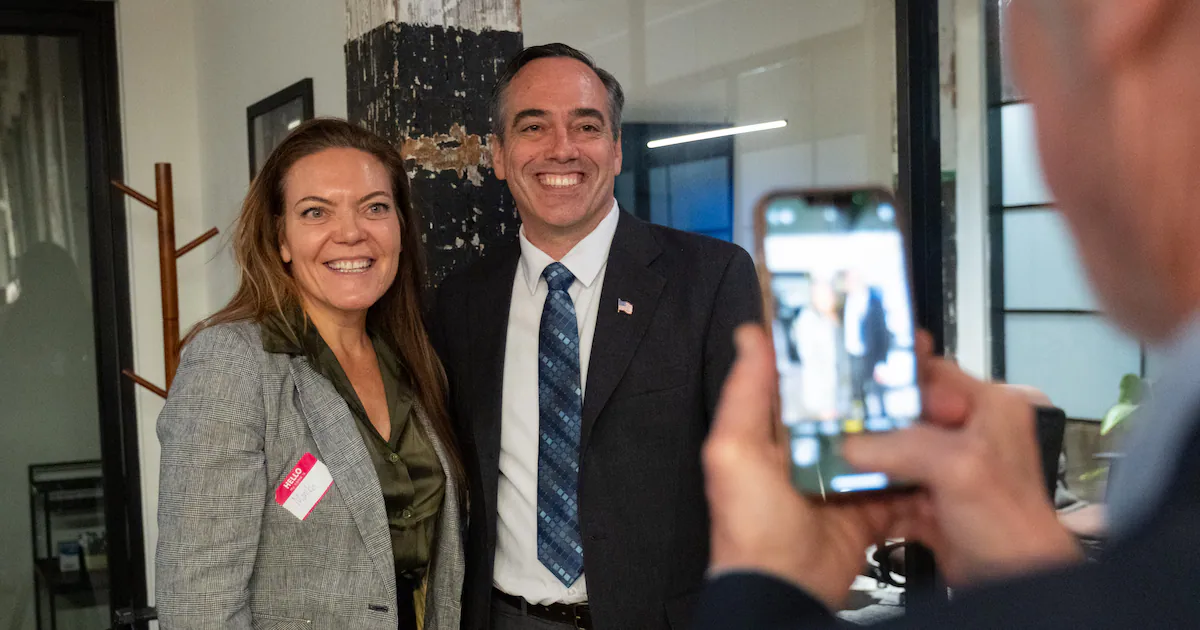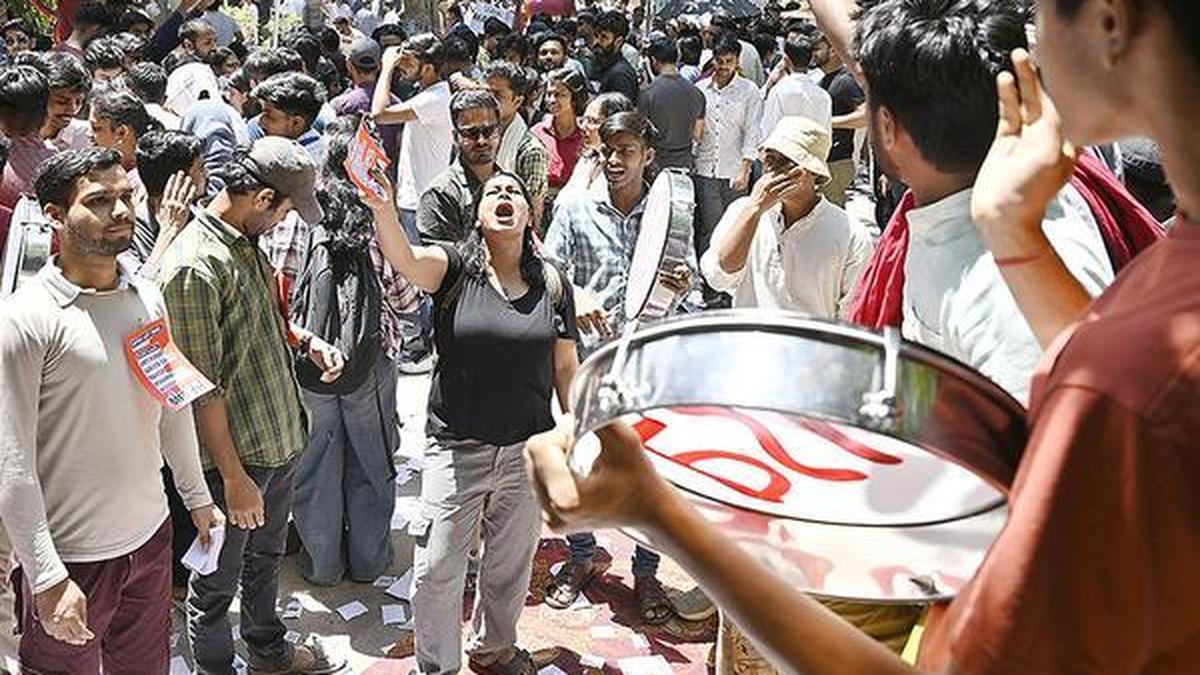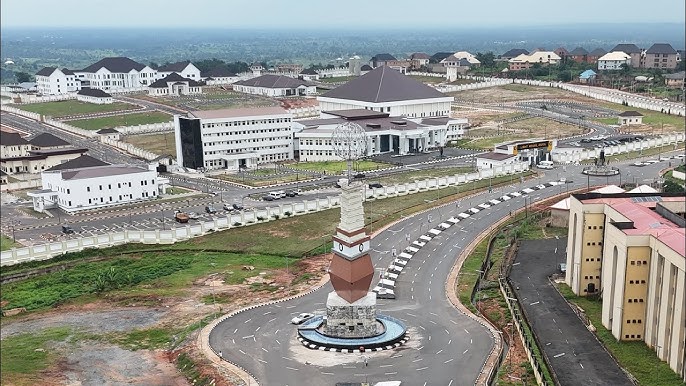Copyright independent

Miriam O’Callaghan was back in Dublin Castle for the Presidential Inauguration 2025 (RTÉ One, Tuesday, 11.15am), as she was a few weeks ago for the declaration of the election result. There is probably a clause in the Constitution requiring that Miriam preside over every national event on Irish TV. What we’ll do when she retires doesn’t bear thinking about. Draft in Dáithí Ó Sé, perhaps. He does that trick at the Rose of Tralee, where he goes down the line, remembering one salient fact about each of the Roses. That would definitely come in handy when trying to find something to say about each of the guests as they arrive. As also seems to be required under broadcasting law, Miriam filled the minutes before the ceremony itself got under way by asking her guests to describe what Catherine Connolly’s elevation to the highest office in the land meant for our “sense of who we are as Irish people”. In response came the first use on the day of the word “inclusive”. It would not be the last. The election of the third female president out of the last four – making any group photo of surviving presidents look like the political equivalent of Boney M – soon had Miriam asking: “What does that mean for us a country, both in our politics and as a society?” Guests duly gave the responses required under the secular catechism at RTÉ, by saying that it reflected “the evolution of Irish society”. Is it for asking hard-hitting questions such as this that Miriam gets the big bucks? The weather, being as grey and wet as the average government backbencher, was nowhere near so obliging, suggesting that God might be one of the few craythurs around who wanted Fine Gael’s Heather Humphreys to win (and the jury’s still out on whether Heather Humphreys was one of them either). This at least is one thing for which we cannot blame our forefathers. They laid down that the ceremony take place in June, when there is at least a 50/50 chance of it not raining. Then Erskine Childers had to go and ruin the whole thing by dying after a year-and-a-bit in office back in 1974, meaning that his successor Cearbhall Ó Dálaigh was forced to step into his shoes mid-term. Though let’s not blame Childers for that. He surely wasn’t best pleased about it either. At 11.26am, Catherine Connolly left Farmleigh in Phoenix Park, wearing purple, the symbolic colour of royalty and power. Clearly, it has not taken the Galway woman long to get used to high office. She was accompanied on her journey to Dublin by the 2nd Brigade Cavalry Squadron from Cathal Brugha Barracks. The big shame was that she went by car rather than on two wheels. Connolly could have been the first president to be sworn in wearing bicycle clips. In St Patrick’s Hall in Dublin Castle, the assembled guests were waiting patiently for the star turn to arrive. Pearse Doherty was on his phone, perhaps checking if Paddy Power had updated the odds yet on a united Ireland now that a Sinn Féin-backed candidate had made it to the Áras. Meanwhile, the Garda Band played with enthusiasm, reminding viewers why brass band music never really took off here as a genre. Miriam was off for a tea-break by this point (green tea, according to her recent memoir; she doesn’t like it, “but it’s good for you”), so expert commentary was now being provided by John Bowman, Ireland’s answer to David Dimbleby, and Áine Lawlor, Ireland’s answer to the question: “Who’s yer woman who presents The Week in Politics?” The dais was soon being filled by former presidents, taoisigh and chief justices, together with various representatives of Ireland’s religious communities, including the Most Rev Michael Jackson, Church of Ireland Archbishop of Dublin, who was also in purple. So was Mary McAleese. Do these people not coordinate their wardrobes to make sure they don’t all turn up in the same outfit? Catherine Connolly was soon sitting on the chair of inauguration, which sounds a bit like something from Game of Thrones, but is actually quite a stylish bit of carpentry. Connolly’s husband, Brian McEnery, a retired woodwork teacher, must have been impressed. Then the speeches began. Boy, did they. There were Christians, Jews, Muslims, even humanists. It’s as well no one thought of inviting Hindus, Buddhists or members of the Church of the Flying Spaghetti Monster as well, or we’d have been here all day. Every now and then, a woman played something soothing on the harp. It was a relief from all the waffle. Sadly, the respite didn’t last long. Taoiseach Micheál Martin got to his feet and started blethering on about “Section 8 of Article 12 of the Constitution”. Back in your lane, Micheál. Filling in the historical background is John Bowman’s job. At last, the great moment came, as Connolly took the oath of office and signed the presidential declaration. The trumpets sounded and the Garda Band played what sounded like the theme from Star Wars. It was now time for the main event – Catherine Connolly’s first speech as President of Ireland. This is always a tricky moment. The longest inaugural speech in history took place in the US, by William Henry Harrison – the ninth president, who ironically went on to become the shortest serving occupant of the White House, lasting just one month in the job in 1841 before becoming the first to die in office. Harrison’s speech lasted for two hours. Michael D Higgins’s previous speeches in 2011 and 2018 didn’t last that long. President Connolly’s speech came in at a comparatively brisk 15 minutes, but was strikingly partisan and political, even in comparison to her predecessor. From the start, she parked her tanks in the yard, metaphorically speaking, by declaring that her victory last month was a “powerful mandate for a new republic”, apparently forgetting that fewer than half of all voters bothered voting at all – and of those who did, a whopping 213,738 spoiled their votes. She also explicitly highlighted the role of the “left” in her win. Evidently, leftism is no longer the love that dare not speak its name. Other than that, there was not a huge difference between her speech and the two preceding addresses by President Higgins. I’d prepared a bingo card in advance to see how many of the same phrases would crop up. “Sustainability” – check, “Equality” – check. “Active citizenship” – check. “Inclusivity” – check, check, check, check. (I lost count after the first four). Higgins gave greater attention to the arts than she did, but otherwise it was much of a muchness. As he did, she mentioned people round the country who were struggling with economic hardship. As he did, she praised the optimistic spirit of the young, and the importance of reaching out to the diaspora. There were familiar warnings about the “existential horror of climate change”. While 14 years ago he spoke of the need to create a “real republic”, she spoke instead of the need to create a “new republic”. It must be left to theologians to discern the difference between the two concepts, or how many achingly progressive angels can dance on the head of either pin. The stuff about being against war was pretty much a facsimile from 2011 too. While coming out against people being killed in various nasty ways is hardly a controversial stance, Connolly did go further than her predecessor in one notable respect. Miggledy always hoped Ireland could take a lead internationally in campaigning for peace. Connolly declared far more forcefully that our historic experience of colonisation and the Famine was no less than a “mandate for Ireland to lead” the world on such issues. Whether anyone has asked the world if it wants to be led by the Irish remains to be seen. The biggest difference was the brief but pointed mention of Connolly’s desire to see a United Ireland. That is one of the few things that Michael D didn’t bang on about too much in his inaugural speeches. Former taoiseach Leo Varadkar, sitting behind Connolly, nodded along approvingly, with all the frustrated fervour of a man who has discovered his vocation in life just when it’s too late to do anything about it, because he’s no longer running the country. If only the “People’s Teesh” had thought of it sooner. The four green fields would be back together already. Speeches over, there was just time for the National Anthem, after which President Connolly went out to receive the usual 21-gun salute. She then travelled back north of the Liffey to Áras an Uachtaráin to prepare for the customary state banquet later. And that was that. All over for another seven years. As a piece of TV, it wasn’t what you’d call gripping – but at this time of a Tuesday lunchtime, RTÉ is normally showing the New Zealand medical soap Shortland Street, so it’s not as if we were missing much. The one question lingering over the day is why the TV coverage has to be so creepingly deferential. We’re not asking for an all-out assault on tradition, but surely the whole point of being a Republic is that you don’t have to bow and scrape to the head of state – as subjects of the British crown are required to do (in theory, if not in practice). We can critique, as well as celebrate, our overlords and overladies. The office has become increasingly political over the past three decades. President Connolly evidently intends to keep pushing that open door. You don’t get to do that without expecting a little pushback.



